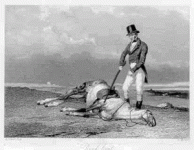Part III
This from "The Knights Templar in Britain" by Evelyn Lord, pg 120 "Their main fleet was in La Rochelle, and it was this fleet, berthed away from the theatre of war, that was part of the maritime network linking the order in the British Isles, with the continent."
With the some 10 vessels I premised recently arriving from Cyprus it would be easy to accept the possibility of 18 ships docked at La Rochelle in early September of 1307.
What is called a rumor by detractors of the story from "Holy Blood Holy Grail" of 18 ships leaving La Rochelle, is much more than merely a rumor. It is actually part of a statement made by Jean de Chalons, preceptor of the Temple commandery in Namur during the investigation into Templar activities in Poitou.
de Chalons testimony, now in the archives of the Vatican, "The leaders of the order, expecting the trouble, have fled, and he himself met the brother Gerard de Villiers [Master of France], who had 50 horses with him, and heard people talking that [Gerard] put to sea with 18 galleys and the brother Hughes de Pairaud." To the question, how he managed to keep this secret for so long, he answered, "nobody for anything in the world would dare to reveal it...for if the order's officials would have found out that somebody had let out the secret he would have been killed straight away."
How did the Templars know of the trouble? Actually the King had sent out his secret orders a full month ahead of the arrests to his sheriffs. The Order had friends throughout France and even in the Palace itself
According to a report by Templar Historian Edward Zaborovsky, there were at least 12 very important escapees wanted by the French Crown, one of these men Gerard de Villiers (The Master of France, and many believe the new Grand Master of the Order)was never seen or heard from again. We also discover an inner secret order that should not be a surprise as all orders seem to have an inner circle. In citing a document in the Vatican Archives, Zaborovsky writes, "The brother Hugues de Chalon, the nephew of the visiter and brother of Gerard de Montclair, warriors of the Order of the Sect of the Temple, together with some accomplices from the same sect planned to kill the King." And we also know that during the burning of Jacques de Molay in 1314, he called upon the King and the Pope to both follow him in death within the year. This did happen which leads us to believe the Inner Sect of the Temple was alive and well.
Zaborovsky also writes that any of those who wanted to escape had every opportunity to do so, telling us that at least 2500 French Knights were unaccounted for.
The 18 or so vessels alleged to be at La Rochelle left port with evidently the Templar treasure from Cyprus as well as those treasures held in Paris, sometime in September of 1307 never to be heard from again.
18 vessels, where did they go? There have been many theory's, turning to piracy being one of them, but it is widely understood that many went to Portugal. In Portugal, King Diniz, rather than arrest or prosecute the Templars, reconstituted them into a new order called "The Order of Christ". Any escaping France Templars were warmly welcomed into the order.
History tells us that the Order of Christ was involved in seafaring activities even to the founding of the famed navigators school at Sagres by the then Grand Master of the Order, Prince Henry the Navigator. This Order of Christ is also known to have financed the first great wave of Portuguese seagoing explorations. As a matter of fact, the legendary Portuguese explorer, Vasco de Gama was actually a member of the Order of Christ.
But what of the legends of some Templars escaping to Scotland? At the time it was relatively safe from the arm of the Church and the French King, and there were many Templar holdings already there. In Scotland only two Templars were ever arrested, and those by English authorities who in 1309 had control of a small portion of Scotland which included Holyrood Abbey, where the trials took place.
There was also a small abbey in the western highlands that was built in the mid-13th century for a sister order to the Cistercian's , remember the Templars themselves were Cistercian. Called the Valliscaulians, (latin for "The Valley Fold) the abbey itself was called the Ardchattan Priory. With the events concerning the arrests of the order happening in late 1307, it is doubtful if any news of this could have reached Ardchattan until the spring of 1308.
End of part III
cheers, Loki






